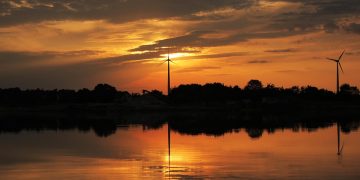Green Energy 101: A Beginner’s Guide to Sustainable Solutions
Introduction
Green energy is becoming increasingly popular as individuals and businesses seek sustainable solutions to reduce their carbon footprint. In this beginner’s guide, we will explore the basics of green energy, its benefits, and how you can incorporate it into your daily life.
What is Green Energy?
Green energy, also known as renewable energy, is derived from natural sources that are constantly replenished, such as sunlight, wind, and water. Unlike traditional fossil fuels, green energy sources are clean, sustainable, and do not contribute to greenhouse gas emissions or air pollution.
Types of Green Energy
There are several types of green energy sources, including:
- Solar Energy: Harnessing sunlight to generate electricity through solar panels.
- Wind Energy: Using wind turbines to convert wind into electricity.
- Hydropower: Generating electricity from flowing water in rivers or dams.
- Biomass: Utilizing organic materials like wood, crops, and waste to produce energy.
- Geothermal Energy: Tapping into heat from the Earth’s core to generate electricity.
Benefits of Green Energy
There are numerous benefits to using green energy, including:
- Reduced carbon emissions and air pollution
- Lower energy costs in the long run
- Decreased reliance on finite fossil fuels
- Creation of jobs in the renewable energy sector
- Enhanced energy security and independence
How to Incorporate Green Energy Into Your Life
There are various ways you can incorporate green energy into your daily life, such as:
- Installing solar panels on your roof to generate electricity
- Switching to energy-efficient appliances and lighting
- Using public transportation, biking, or walking instead of driving
- Supporting policies and initiatives that promote renewable energy
Common Questions About Green Energy
1. Is green energy more expensive than traditional energy sources?
While the initial cost of installing green energy systems may be higher, the long-term savings on energy bills can offset the upfront investment. Additionally, many governments offer incentives and rebates to encourage the adoption of renewable energy.
2. How reliable is green energy?
Green energy sources like solar and wind power are becoming increasingly reliable thanks to advancements in technology and infrastructure. Backup systems, such as battery storage, can also help ensure a continuous and stable energy supply.
3. Can I sell excess green energy back to the grid?
Many utility companies offer net metering programs that allow you to sell excess energy generated by your green energy system back to the grid. This can help offset your energy costs and promote the growth of renewable energy.
Conclusion
Green energy offers a sustainable and environmentally friendly alternative to traditional energy sources. By harnessing the power of renewable resources, we can reduce our carbon footprint, lower energy costs, and create a more sustainable future for generations to come.




